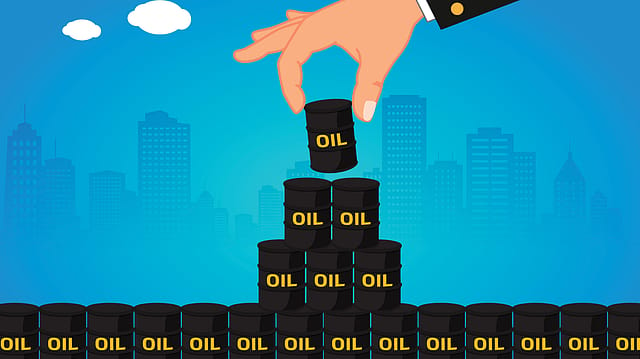How Russian Oil Bulked Up India's Exports

INDIA-RUSSIA bilateral trade hit a high of $35 billion in April-December 2022, with $32.8 billion contributed by imports, a 400% jump from $6.5 billion in same period of the previous year. Within imports, petroleum-related products accounted for as much as $27.7 billion, a 700% increase from $3.4 billion a year ago. If foreign trade data of first nine months of FY23 is any indication, Russia is set to become India's fifth-biggest merchandise trade partner, up from 25th last year. The reason is surge in imports, especially oil, from Russia.
In the past 10 years, Russia has been among India's top 25 trade partners only thrice. The first was in FY18 when it was 23rd with trade of $10.7 billion. In FY20 and FY22, it was 25th, with trade of $10 billion and $13 billion, respectively. In comparison, FY23 is going to be spectacular.
The surge is directly linked to Russia's ongoing war with Ukraine. Russia's decision to offer crude oil at special rates to bypass economic sanctions of Western governments, and India's readiness to accept it, have made all the difference. It is the surge in imports of a specific product category, Harmonized System (HS) Code 27, which covers mineral fuels, mineral oils and production of their distillation, bituminous substances and mineral waxes, that has catapulted Russia to the list of India's top five trading partners.
But is Russian impact only limited to imports? "Of the 30 key product sectors, 17 exhibited positive export growth during April-January FY23, which is impressive looking at the current scenario," says A. Shaktivel, president, Federation of Indian Export Organisations. An analysis of sectors that reported most growth in exports throws light on whether cheaper crude oil from Russia helped India's value-added petroleum product exports. The latest foreign trade data released by the commerce ministry (detailed country-specific data is available only till December 2022) on February 15, 2023, shows that during April-January FY23, the largest exported commodity was petroleum products at $78.6 billion, up 54.78% from $50.8 billion a year ago.
A look at country-specific data for April-December 2022 illustrates this further. India's exports to Brazil rose 65.7% from $4.7 billion to $7.9 billion. The Contribution of HS Code 27, or petroleum products, rose 339% from 0.86 billion to $3.7 billion. Israel saw 75.9% rise from $3.6 billion to $6.3 billion with petroleum products accounting for $4 billion, a 230% jump from $1.2 billion in same period of the previous year. In case of The Netherlands, Indian exports grew 74.24 % from $8.1 billion to $14.1 billion; petroleum product exports rose 126% from $3.3 billion to $7.4 billion.
Similarly, if Indian exports to South Africa rose 47% from $4.6 billion to $6.7 billion, the primary driver was a 191% jump in supply of Indian petroleum products (worth $3.2 billion as against $1.1 billion a year ago).
Even a traditional supplier of crude oil to India, the U.A.E. saw India's exports rise 16.45% from $20 billion to $23 billion, on the back of a 66% jump in value-added petroleum product exports from $3.9 billion in April-December 2021 to $6.5 billion in April-December 2022.
The numbers clearly show that value-added petroleum product exports contributed significantly in India's export performance in an otherwise gloomy global trade scenario during the year. If India has registered an 8.5% growth in exports in FY23 so far, this cannot be attributed to general resilience of its economy but contribution of products classified under HS Code 27.
India may keep sourcing more oil from Russia but any upward price revision, including of Russian crude oil, can impact India's Russian oil advantage both in imports and exports. India's foreign trade will have a Russian signature in FY23 but that may not be an indication of the country's larger capability to push exports in a slowing global economy.